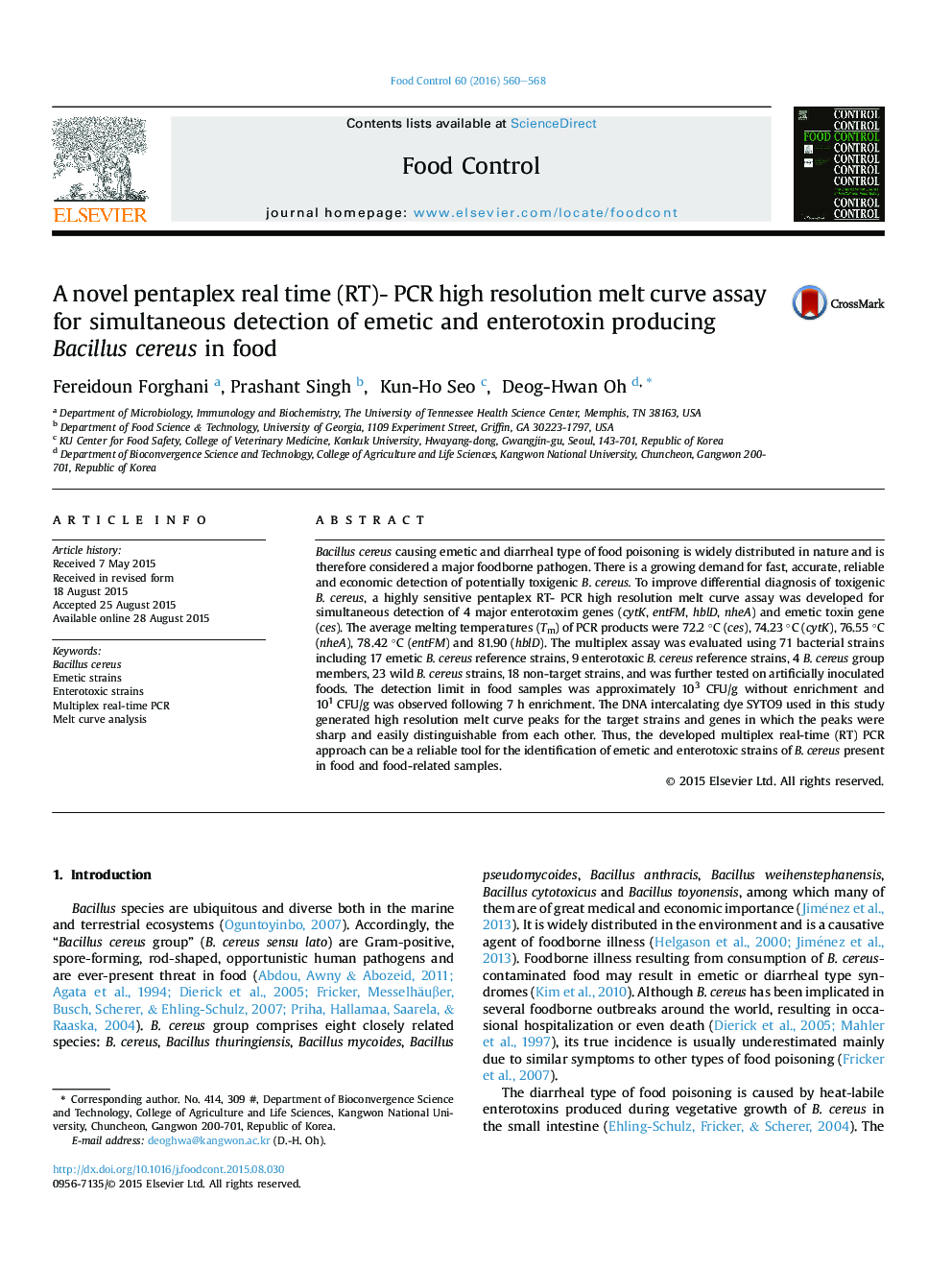| Article ID | Journal | Published Year | Pages | File Type |
|---|---|---|---|---|
| 6390347 | Food Control | 2016 | 9 Pages |
â¢First multiplex real-time PCR HRM curve analysis to detect toxigenic Bacillus cereus.â¢Widest toxin detection range (pentaplex) among all developed real-time assays.â¢High sensitivity and low detection noise due to application of SYTO9.â¢A detection limit of 3 log CFU/g food or higher in less than 6 h.â¢A detection limit of 1 log CFU/g with an enrichment step of 7 h.
Bacillus cereus causing emetic and diarrheal type of food poisoning is widely distributed in nature and is therefore considered a major foodborne pathogen. There is a growing demand for fast, accurate, reliable and economic detection of potentially toxigenic B. cereus. To improve differential diagnosis of toxigenic B. cereus, a highly sensitive pentaplex RT- PCR high resolution melt curve assay was developed for simultaneous detection of 4 major enterotoxim genes (cytK, entFM, hblD, nheA) and emetic toxin gene (ces). The average melting temperatures (Tm) of PCR products were 72.2 °C (ces), 74.23 °C (cytK), 76.55 °C (nheA), 78.42 °C (entFM) and 81.90 (hblD). The multiplex assay was evaluated using 71 bacterial strains including 17 emetic B. cereus reference strains, 9 enterotoxic B. cereus reference strains, 4 B. cereus group members, 23 wild B. cereus strains, 18 non-target strains, and was further tested on artificially inoculated foods. The detection limit in food samples was approximately 103 CFU/g without enrichment and 101 CFU/g was observed following 7 h enrichment. The DNA intercalating dye SYTO9 used in this study generated high resolution melt curve peaks for the target strains and genes in which the peaks were sharp and easily distinguishable from each other. Thus, the developed multiplex real-time (RT) PCR approach can be a reliable tool for the identification of emetic and enterotoxic strains of B. cereus present in food and food-related samples.
